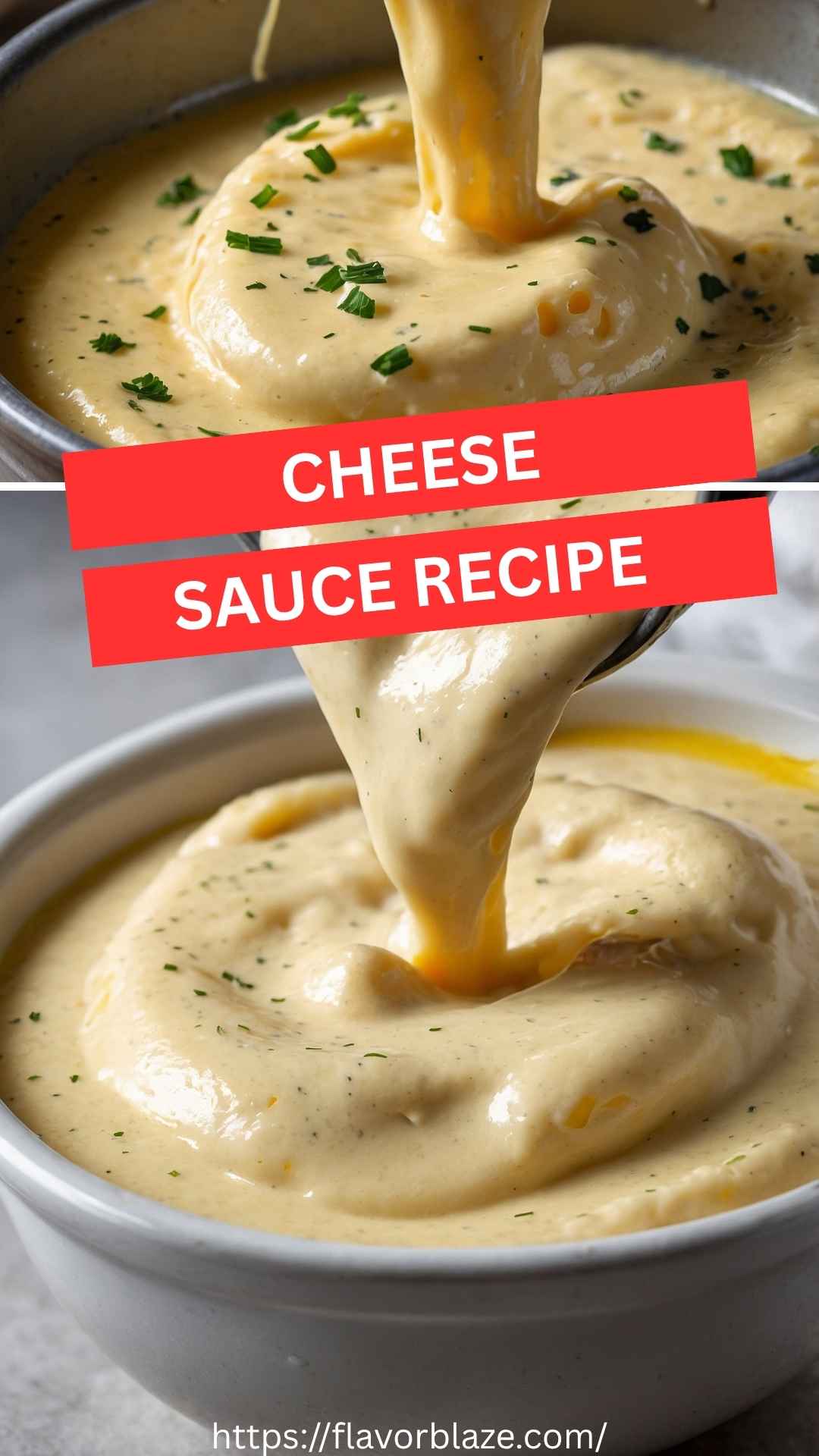Before we dive into the creamy depths of a good cheese sauce, let’s talk about what you can pair it with. Cheese sauce is incredibly versatile. You can drench it over steaming, just-cooked broccoli, or pour it generously onto nachos for that ultimate game-day snack. What about a lovely pasta dish?
It transforms simple spaghetti into a gourmet experience. Let’s not forget the classic mac and cheese, which becomes even more comforting with a killer cheese sauce. Plus, it can elevate your baked potatoes to new heights. The possibilities are nearly endless.
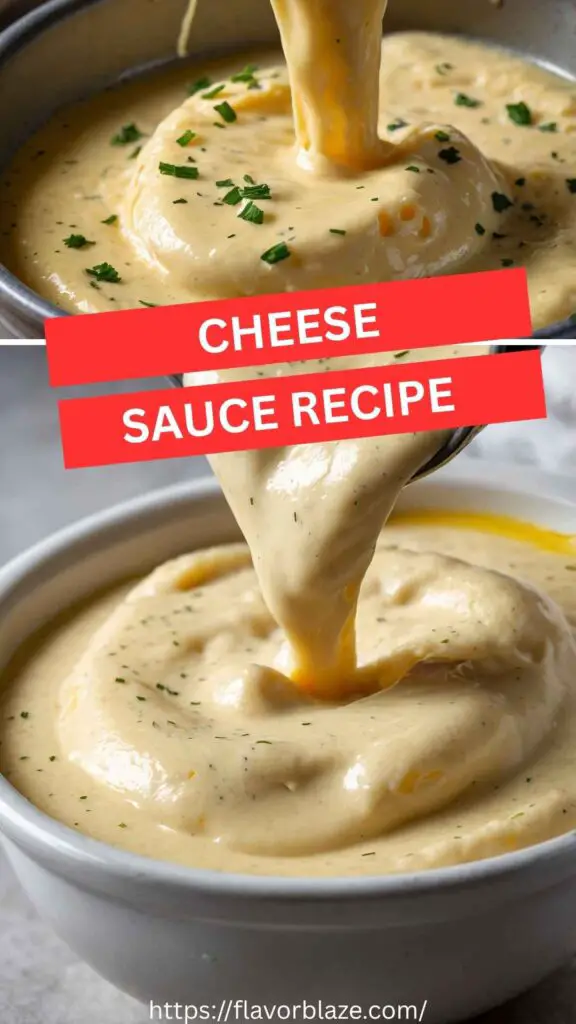
You’ll Also Like These Recipes
I still remember the first time I encountered a rich cheese sauce. I was at a small, family-owned diner. The aroma was intoxicating as the lighthearted banter around me faded.
The waitress set down a plate of nachos covered in a velvety cheese sauce, and my heart skipped a beat. That was a moment of culinary magic. A cheese sauce doesn’t just add flavor—it creates nostalgia, warmth, and satisfaction.
Today, I’m going to share with you my go-to cheese sauce recipe. Trust me; it’s as satisfying to make as it is to eat. Plus, you don’t need to be a culinary expert. This guide is packed with insights, tips, and small touches that will elevate your cheese sauce to a star dish.
What is Cheese Sauce?
Cheese sauce is a creamy mixture typically made from a combination of cheese, milk, and a thickening agent like flour or cornstarch. Its allure lies in its ability to be both simple and luxurious.
You can dress it up with spices or keep it classic. Whatever way you choose to make it, the result is always delightful.
Flavor Profile of This Dish
Imagine a warm embrace. That’s the flavor profile of cheese sauce. There’s a creaminess that coats your palate, coupled with the rich, nutty taste of cheese.
Depending on the cheese you use, it can also have sharpness—a zing that dances on your taste buds. It’s comforting and indulgent, making you want to have just one more scoop.
What Makes This Recipe Different?
This cheese sauce recipe is not just another generic version tossed together in a hurry. It has deeply considered ingredients that enhance its flavor, like dry mustard powder and white pepper.
These components introduce a subtle tang and depth that may surprise you. The use of fresh cheese is critical—a pre-shredded cheese might save time, but freshly shredded cheese melts into a smooth, delightful sauce.
Ingredients You’ll Need
Here’s a full list of what you need:
- 1 cup whole milk: Warmed slightly to help achieve a smooth consistency.
- 2 tablespoons all-purpose flour: Sifted to avoid clumps. Trust me, nobody wants a grainy cheese sauce!
- ¼ teaspoon dry mustard powder: This new addition elevates the cheese’s tanginess.
- 2 tablespoons unsalted butter: Preferably European-style for that richer flavor.
- ¼ teaspoon fine sea salt: Adjust according to taste preferences.
- A small pinch of ground white pepper: Adds subtle heat and depth.
- 1 ¾ cups sharp Cheddar cheese: Make sure it’s freshly shredded for ultimate gooeyness.
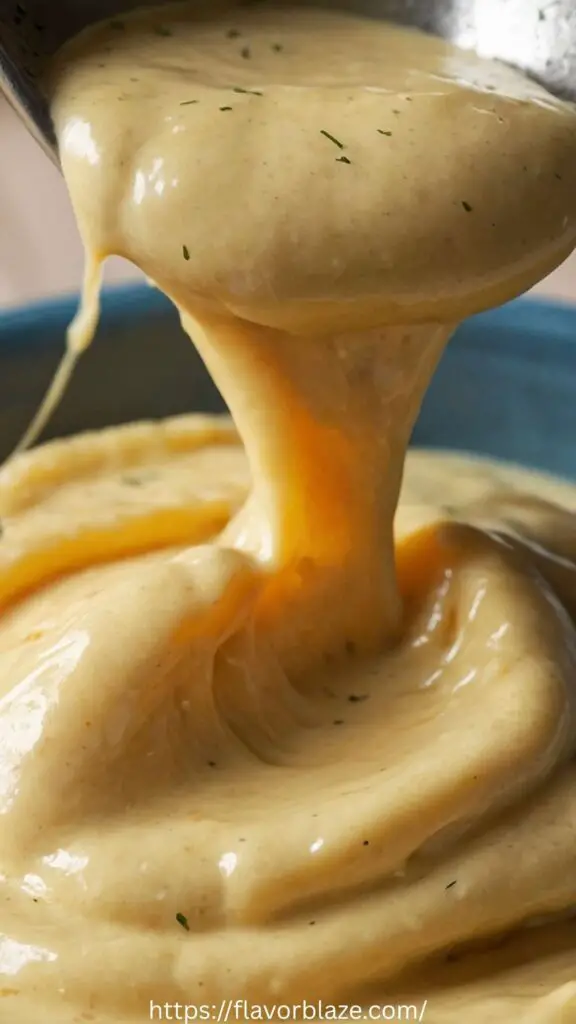
Step-by-Step Directions
Step 1: Prepare the Ingredients
Gather all your ingredients. This sets you up for success. The last thing you want is to scramble for flour while your butter’s melting.
Step 2: Melt the Butter
In a medium saucepan over medium heat, add the unsalted butter. Allow it to melt completely, swirling the pan if needed. This step creates the base of your sauce, giving a rich flavor.
Step 3: Whisk in the Flour
Once the butter has melted, take it off the heat momentarily and whisk in the sifted flour. You’ll want to create a roux. Place the pan back on the heat and keep whisking for about 1-2 minutes until the mixture is smooth and bubbly.
Step 4: Add the Milk
Gradually pour in the warmed milk, whisking continuously. This will help to avoid lumps. Make sure to keep stirring until the mixture begins to thicken and bubble gently.
Step 5: Spice It Up
Stir in the dry mustard powder, salt, and ground white pepper. Combine everything, letting the flavors meld together beautifully.
Step 6: Add the Cheese
Remove the mixture from the heat. Stir in the freshly shredded sharp Cheddar cheese, one handful at a time. Patience is critical here; allow each handful of cheese to melt completely before adding more. This creates a dreamily smooth cheese sauce you’ll want to keep on hand.
Step 7: Taste and Adjust
Now’s your moment to taste your cheese sauce. Adjust the seasoning as desired. If you feel it needs a little more zing, sprinkle in a bit more mustard or salt.
Tips On Making Cheese Sauce
- Use Fresh Cheese: Always opt for freshly shredded cheese. Pre-shredded cheese contains additives that can affect melting.
- Warm the Milk: Heating the milk beforehand helps it blend more smoothly into the roux, which is crucial for avoiding a lumpy sauce.
- Whisk Constantly: Stirring keeps your cheese sauce smooth. It prevents clumps and ensures even cooking.
- Experiment with Cheeses: Don’t limit yourself to just Cheddar. Try Gouda, Gruyere, or even a bit of cream cheese for added creaminess.
- Store for Later: Cheese sauce can be stored in the fridge. When reheating, add a splash of milk to restore the creaminess.
Nutrition Information
This cheese sauce serves about six people, and nutritional information per serving is approximately:
- Calories: 200
- Total Fat: 14g
- Saturated Fat: 8g
- Carbohydrates: 10g
- Protein: 11g
- Fiber: 0g
Nutrition can vary based on exact cheese and milk used, so consider this as a general guide.
How Can I Store This Cheese Sauce Recipe?
To store your cheese sauce, let it cool down to room temperature. Then, transfer it into an airtight container. It can last in the fridge for about 3-5 days. You can also freeze it for longer storage—just ensure to thaw and reheat gently to maintain the texture.
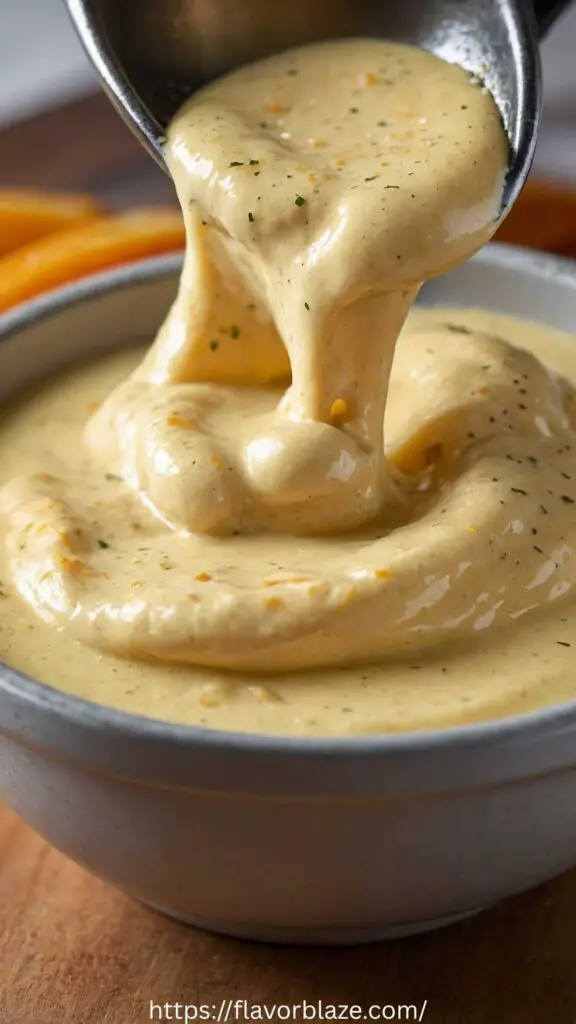
Ingredient Substitutes
If you find yourself without certain key components, don’t fret. Here are some substitutes that work wonders:
- Milk: In a pinch, you can use unsweetened almond milk or even chicken broth if you’re feeling adventurous. Just keep in mind it may affect the final flavor.
- Butter: If you have olive oil, you can swap it in for butter. It won’t have the same richness, but it will still create a decent sauce.
- Cheddar Cheese: Try Gruyere or Monterey Jack for a different flavor. Both melt beautifully and can enhance your dish in unique ways.
- Flour: Cornstarch can serve this purpose too! Just mix it with a bit of water beforehand to make a slurry and then add it to your sauce.
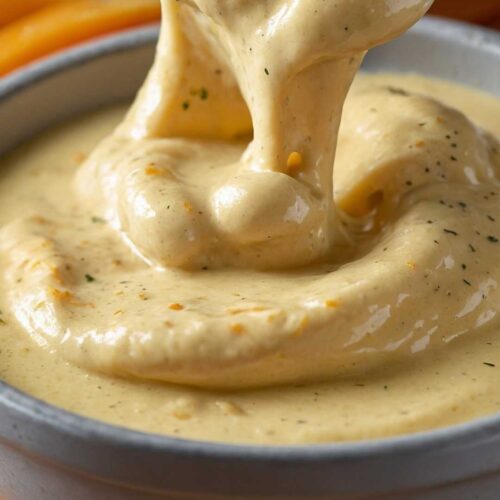
Cheese Sauce Recipe
Equipment
- Saucepan, Cup
Ingredients
- 1 cup whole milk: Warmed slightly to help achieve a smooth consistency.
- 2 tablespoons all-purpose flour: Sifted to avoid clumps. Trust me nobody wants a grainy cheese sauce!
- ¼ teaspoon dry mustard powder: This new addition elevates the cheese’s tanginess.
- 2 tablespoons unsalted butter: Preferably European-style for that richer flavor.
- ¼ teaspoon fine sea salt: Adjust according to taste preferences.
- A small pinch of ground white pepper: Adds subtle heat and depth.
- 1 ¾ cups sharp Cheddar cheese: Make sure it’s freshly shredded for ultimate gooeyness.
Instructions
Step 1: Prepare the Ingredients
- Gather all your ingredients. This sets you up for success. The last thing you want is to scramble for flour while your butter’s melting.
Step 2: Melt the Butter
- In a medium saucepan over medium heat, add the unsalted butter. Allow it to melt completely, swirling the pan if needed. This step creates the base of your sauce, giving a rich flavor.
Step 3: Whisk in the Flour
- Once the butter has melted, take it off the heat momentarily and whisk in the sifted flour. You’ll want to create a roux. Place the pan back on the heat and keep whisking for about 1-2 minutes until the mixture is smooth and bubbly.
Step 4: Add the Milk
- Gradually pour in the warmed milk, whisking continuously. This will help to avoid lumps. Make sure to keep stirring until the mixture begins to thicken and bubble gently.
Step 5: Spice It Up
- Stir in the dry mustard powder, salt, and ground white pepper. Combine everything, letting the flavors meld together beautifully.
Step 6: Add the Cheese
- Remove the mixture from the heat. Stir in the freshly shredded sharp Cheddar cheese, one handful at a time. Patience is critical here; allow each handful of cheese to melt completely before adding more. This creates a dreamily smooth cheese sauce you’ll want to keep on hand.
Step 7: Taste and Adjust
- Now’s your moment to taste your cheese sauce. Adjust the seasoning as desired. If you feel it needs a little more zing, sprinkle in a bit more mustard or salt.
Notes
- Use Fresh Cheese: Always opt for freshly shredded cheese. Pre-shredded cheese contains additives that can affect melting.
- Warm the Milk: Heating the milk beforehand helps it blend more smoothly into the roux, which is crucial for avoiding a lumpy sauce.
- Whisk Constantly: Stirring keeps your cheese sauce smooth. It prevents clumps and ensures even cooking.
- Experiment with Cheeses: Don’t limit yourself to just Cheddar. Try Gouda, Gruyere, or even a bit of cream cheese for added creaminess.
- Store for Later: Cheese sauce can be stored in the fridge. When reheating, add a splash of milk to restore the creaminess.
Nutrition
Frequently Asked Questions
1. Can I make cheese sauce in the microwave?
Yes! Just melt the butter in a microwave-safe bowl, whisk in the flour, and gradually mix in the milk. Heat until thickened, stirring every 30 seconds to avoid heating unevenly.
2. Can I add spices to my cheese sauce?
Certainly! Chilli powder, paprika, or even garlic powder can enhance flavor. Just remember to start with a small amount and adjust according to your taste.
3. Why is my cheese sauce lumpy?
Lumps typically occur from adding cheese too quickly or not whisking continuously. Make sure your milk is warm and add cheese gradually.
4. How can I make it vegan?
Use unsweetened plant milk and nutritional yeast instead of cheese. There are also plant-based cheese options available that melt well.
5. What dishes can I use cheese sauce with?
Think beyond traditional uses! It’s fantastic on baked potatoes, as a dip for veggies, over grilled chicken, or even drizzled on sandwiches.
Conclusion
As you explore the world of cheese sauce, you’ll find endless ways to enjoy it. It’s not just a recipe; it’s a celebration of flavors. Every time I whip up a batch, I can’t help but feel that warmth and comfort return.
Whether you are hosting a gathering or simply indulging on a quiet evening at home, a well-crafted cheese sauce can make everything better. Give this recipe a try, and before long, you’ll find yourself basking in sauce-filled nostalgia. Enjoy!

